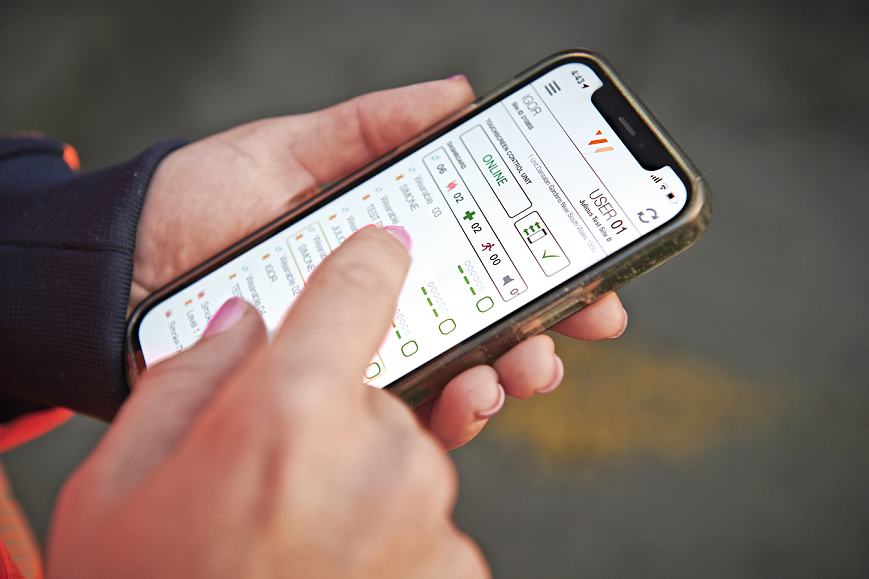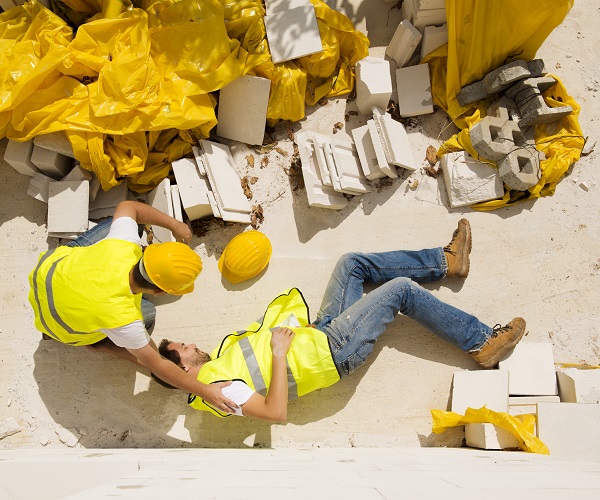Our safety alert systems are intended to be used in the event of a medical or evacuation emergency. As soon as you’re aware of an issue, you just need to find the nearest Vanguard Wireless nurse call or evacuation device and press the button to raise the alarm.
While raising the alarm quickly is important, there’s actions you as the patient OR carer should take while you wait for help to arrive. Familiarising yourself with them, and implementing in a timely fashion could drastically improve the patient’s physical status and chance of survival. Here’s some of the most common issues you’re likely to experience on a construction site.
CUTS & ABRASIONS
Regardless of whether the wound is superficial or serious, medical attention should be sought immediately to reduce chance of infection.
- Symptoms: these can be a clean wound (caused by a sharp object or puncture), a laceration (an irregular, messy cut) or a contusion (where trauma to the surrounding tissue has occurred).
- What should the patient do: sit in a comfortable position, if possible, elevate the bleeding part (unless a limb is fractured), cover the wound and apply pressure.
- What should the carer do: place the patient in a comfortable position, keep them still, remove as little clothing as possible, remove foreign bodies (if possible), apply and maintain pressure with a clean dressing or bandage, ensure adequate pressure is on the torn ends of the blood vessels.
HEAT STROKE
When you’re working in the elements, and the summer temperature can reach 45+ degrees on site, heat stroke is a risk you need to be mindful of.
- Symptoms: throbbing headache, light-headedness, lack of sweating despite the heat, red/hot/dry skin, weakness and cramps, nausea and vomiting.
- What should the patient do: immediately move out of the heat, remove excessive clothing, and take action to cool down by whatever means possible.
- What should the carer do: remove the patient from the heat and cool them down quickly with water, fans, ice packs, wet towels, damp sheets. Focus on the areas where major arteries exist such as the shoulder pits, neck and groin as this will cool the blood as it pumps around the body. Make them drink water or suck on ice to dehydrate.
HEART ATTACK
This can happen at anytime and anywhere to anyone. Essentially there's a blockage to the heart and blood is failing to pump through it properly. This can then lead to blood clots, which can then cause a stroke.
- Symptoms: sometimes differing between men and women, these can be pain and discomfort in the chest or neck area, shortness of breath, fainting, sweating.
- What should the patient do: sit in a comfortable position and try to remain still. Try to maintain consciousness and make conversation with your carer.
- What should the carer do: keep the patient calm, make sure they’re in a relaxed position in a well-ventilated area, if unresponsive check that they’re breathing, and if not, administer CPR. If there's a defibrillator nearby, open it and apply the pads to the chest. Most defibrillators now guide you through the CPR and shock process.
BURNS & SCALDS
Burns are caused by a dry heat, such as hot equipment, friction or exposure to electricity. They can also be caused by exposure to corrosive chemicals. Scalds are caused by moist heat such as boiling water, steam, hot oil or tar. The treatment for both is relatively the same.
- Symptoms: reddening of the skin, blisters, welts.
- What should the patient do: move to a comfortable position and immobilise the affected area. Don’t remove clothing and keep as sterile as possible.
- What should the carer do: keep the area sterile and the patient calm and comfortable, do not apply lotions of any kind or break blisters, cover the burn area with a dry, clean dressing. In the case of a chemical burn, rinse the part with water then bath in either an alkaline solution (for acid burns) or weak acidic solution (for alkaline burns).
EYE TRAUMA
On windy days or when there’s a lot of debris in the air, it’s easy for foreign bodies to enter the eye, causing a lot of discomfort. If it becomes embedded in the eye it can cause serious damage.
- Symptoms: something under the eyelid, or burning/stinging of the eye area.
- What should the patient do: try not to rub the eye. Ask someone to assist you to determine what the issue is.
- What should the carer do: face the patient to the light and try to find the foreign body under the eyelid. If embedded, do not attempt removal. If not embedded, remove with a clean damp cloth or flush with water. When finished, cover the eye with a clean cloth to prevent further movement.
Regardless of the emergency, the most important piece of advice is to remain calm – both as the patient and carer. Remaining calm will improve your mental clarity, enabling you to receive/deliver the most effective first aid until help arrives.


